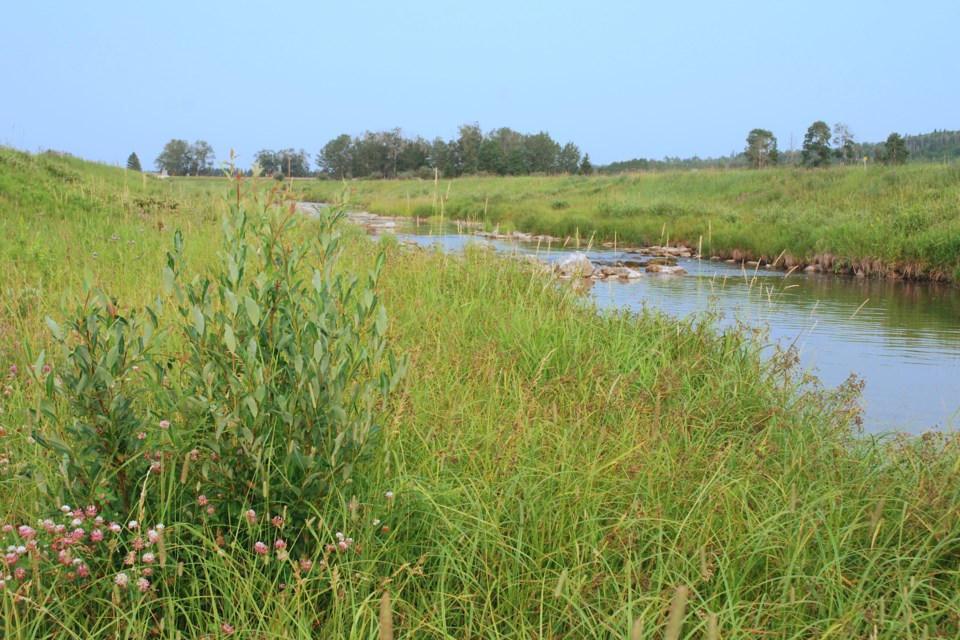SUNDRE — Despite a misunderstanding that led to the removal of some of the shrubs and trees that had been planted several years ago along the Bearberry Creek’s banks as part of a riparian habitat rehabilitation project, the bulk of the dogwood-style willows seem to have taken root, said the town’s operations manager.
In 2017, about 1,900 trees and shrubs — including a variety of ashes, willows, poplars, junipers and dogwoods — were planted following years of preparing plans for the creek’s bank stabilization project, which was a mandated requirement to offset the footprint of eight erosion control spurs that were installed near the Red Deer River Bridge in 2012.
That project was completed with funding from a $2.1-million grant, of which $200,000 had to be spent on fish habitat enhancement along the Red Deer River or one of its tributaries to make up for the spurs’ footprint.
The Bearberry Creek was identified as the most suitable location for the work to have a chance at success due to the much stronger Red Deer River flow’s unpredictable tendency to change every year, which substantially reduces the odds of any planted trees and shrubs along the constantly changing banks from being able to take root.
The objective was to improve biodiversity — some large rocks were also added into the creek to create eddies to help improve fish habitat — as well as to reduce erosion on both of the stream’s north and south banks.
The spring following the initial effort to plant the trees, there was an issue that stemmed from confusion when an Alberta Transportation crew was cutting grass in the area and inadvertently removed some of the trees and shrubs that had been planted higher up from the creek, said Jim Hall.
Sundre’s operations manager said his primary focus was to concentrate along the banks, where willows, among other shrubs, “have taken very strongly (with) 80 per cent survival.”
Although not the large type of willow trees that might typically come to mind, the varieties are more of a dogwood style that don't grow tall but do bush out, he said.
"Any of those plants that kind of stand out of the grass are pretty much the willow plantings we did. In five to 10 years, they’ll push up probably in about five-foot circles and fill in the area giving shade and assisting water temperatures,” he said.
The project — which spanned several hundred metres east from the Highway 22 bridge — was a challenging one from the start, he said.
“On the north side of the creek, the soil was pretty limited for growth. So, we had to upgrade material and re-plant,” he said.
Following the project’s completion, a third-party biologist group pulled some fish out of the zone. However, that effort occurred during a very low flow year, he said.
“The good news is there was a brown trout fingerling caught, verifying that sport fish could make the upper zone that we are working on,” he said.
In about another year, he added the municipality will be expected to deliver a report to the Department of Fisheries and Oceans Canada (DFO).
“The engineering firm representing the Town of Sundre will submit all those reports to the department,” he said.
“They (DFO) will then decide if it was a success and if it met the requirements of the offsetting (the footprint) from the Red Deer River spurs.”




